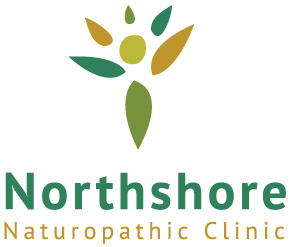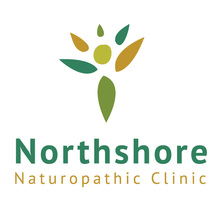By Dr. Jonn Matsen, ND
Yeast (also known as Candida yeast) are members of the fungus family; they are normal denizens of your intestinal tract. Their job is to turn you into compost when you’re dead. Candida yeast are strongly inhibited by acidity, and they are content to hide away in the nooks and crannies of your large intestine – wherever the pH is acceptably alkaline. Your main defence against them is billions of acidophilus bacteria (your good bacteria) that maintain an acid pH in your large intestine (colon), which inhibits yeast growth.
Anything that disrupts the pH of your colon and your good bacteria – such as antibiotics, mercury, antacids, chlorinated water, cortisone, etc. – allows the yeast to begin the composting process while you’re still alive. Once they are active, yeast have ways of convincing you that sugar and chocolate are necessary in your diet.
Another way the yeast can become active is when your ileocecal valve is weakened. The ileocecal valve is located between your small intestine and your large intestine. This valve is usually kept closed so that the food you’ve eaten stays in your small intestine long enough to be digested and absorbed fully. It also prevents the good micro-organisms in your large intestine from getting into your small intestine, where their waste products could easily be absorbed. As digestion and absorption are completed in your small intestine, your ileocecal valve opens, and the food passes into your large intestine or colon.
When your ileocecal valve is weakened, the billions of normally “good” bacteria that live in the large intestine get through the ileocecal valve, up into your small intestine – where they’re not supposed to be. There, they can become “Bad Guys” – they steal important nutrients like vitamin B12 and tryptophan before you have absorbed them, and they can also dump toxins into your liver. Once your good bacteria become bad, yeast soon join the party. The alkaline pH of the small intestine allows the yeast to multiply vigorously.
Your ileocecal valve can become weak when your calcium levels are low for more than five days – calcium helps to strengthen this valve. Increasing your calcium intake doesn’t necessarily solve the ileocecal valve problem, because the solution depends on whether the calcium is being absorbed by your body. Vitamin D is required for calcium absorption: it stimulates your intestinal cells to make a calcium-binding protein that dramatically increases your absorption of calcium. Vitamin D is made by your skin when exposed to the ultraviolet (UV) rays of the sun, and then it is stored in an inactive form in your liver.
When vitamin D is released from liver storage, your liver converts it into a weak form of vitamin D, which then activates calcium absorption to a small degree. This might be sufficient activation if you were out in the sun regularly, when your skin can make a lot of vitamin D. Your kidneys convert this weak form of vitamin D into a much stronger form that can improve calcium absorption up to 1,000 times. This strong activation of vitamin D is especially crucial for wintertime when there is little sun around to make vitamin D directly through the skin.
Your kidneys are in charge of regulating calcium levels by altering the activation of vitamin D with the changes in the seasons. Because the kidneys can’t see outside to know what the weather is like, they monitor the ions in the foods and the beverages you’re consuming. The sodium/potassium ion ratio tells the kidneys what to do with regard to the activation of vitamin D.
Your blood contains 3 percent sodium, a percentage similar to that found in the ocean and in animals. Your kidneys maintain a 50/50 ratio of sodium and potassium at all times. Excess sodium in the diet is eliminated through the kidneys, giving a warming effect to your body and making you more active, while an excess of potassium has a cooling effect, which slows you down.
All plants contain potassium; generally, the more sun they’re exposed to, the more potassium they contain. Eat a banana, which has lots of potassium, and your kidneys will think that you’re in Hawaii, and that your skin must be roasting in the sun – making vitamin D – so they stop activating vitamin D. if you’re not actually out in the sun, you could quickly lose your calcium absorption – and within five days, your ileocecal valve could be weak enough to allow your billions of good bacteria to stampede into your small intestine, where they could become Bad Guys.
A vegetarian animal on a high-potassium diet needs access to salt, while a carnivorous animal gets its salt from the 3 percent sodium found in the vegetarian animal that it eats. In the winter, an Inuit would be on a high-sodium animal-protein diet, which would tell the kidneys that the weather is not sunny, so his kidneys would activate the vitamin D much more vigorously.
If your skin is going brown from the sun, you can eat a slight excess of potassium; otherwise you should eat a slight excess of sodium. This is the basis of the concept in Asian medicine of “yin and yang” – warming and cooling. Even though most Asians don’t have high-calcium dairy products in their traditional diets, they generally have much lower incidences of dental cavities and osteoporosis than do Westerners who use dairy – and who also eat a lot of fresh fruit, juices, and salads, even in winter.
The ileocecal valve problem is commonly seen in PEOPLE WHO EAT TOO WELL! That is, they consume too many foods and drinks high in potassium, and don’t consume enough sodium in the form of animal protein or salt. This confuses the kidneys into assuming they are in the hot sun of mid-summer, so they deactivate vitamin D.
While the kidneys’ activation of vitamin D is crucial to getting calcium from the gut to the blood, it is vitamin K that delivers calcium from the blood into the bone. Vitamin K also prevents calcium from sticking in the arteries – thereby reducing the risk of heart disease and stroke. Vitamin K is found in leafy greens; cooking them slightly and salting them will help prevent ileocecal valve problems when you’re not actually out in the sun.
RECOMMENDATIONS
- Vitamin D is crucial for the absorption of calcium. If you’re out in the sunshine and your skin is exposed to the UV rays of the sun, it will make vitamin D. If you’re unable to get regular sun exposure, take vitamin D as a supplement – one capsule of halibut or cod liver oil per day. These sources of vitamin D seem to be more active than the irradiated yeast used in vegetarian vitamin D supplements.
- Vitamin D is relatively passive until it’s activated by your kidneys, which change the activation of vitamin D as the weather changes. Sodium in the diet tells the kidneys it’s not sunny, so they activate vitamin D – while potassium tells the kidneys it is sunny, so they don’t activate vitamin D. So, eat according to the climate in which you are living.
If you eat animal products, you get adequate sodium; if you eat vegetable products, you need to add salt. Unrefined sea salt carries myriad trace minerals that buffer the potential side-effects of pure sodium chloride. Salt, however, including most sea salts, has had these important trace minerals stripped off and sold to the industrial mineral market. The salt I recommend now is Nature’s Cargo™ Sea Salt (www.naturescargo.ca), Allenford, Ont (1 888 725 8386).


